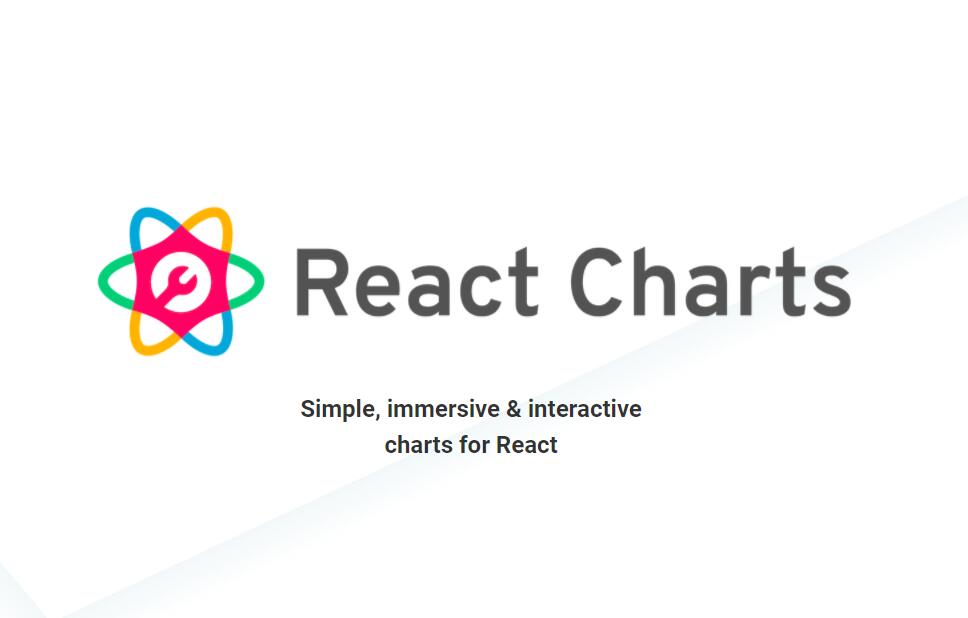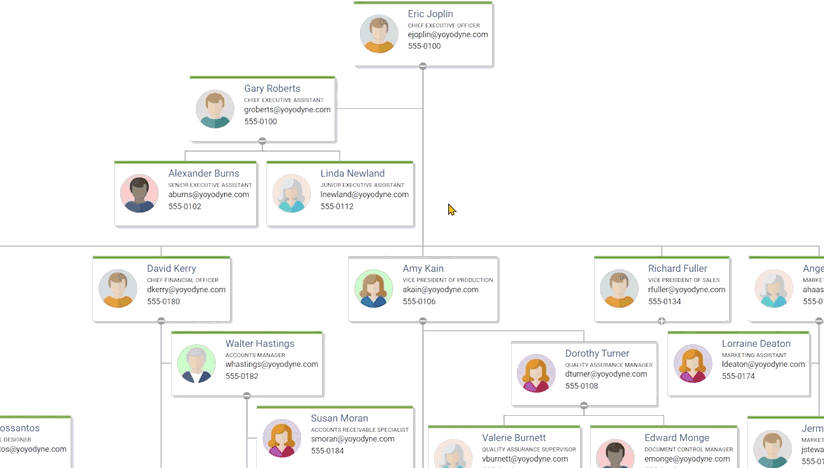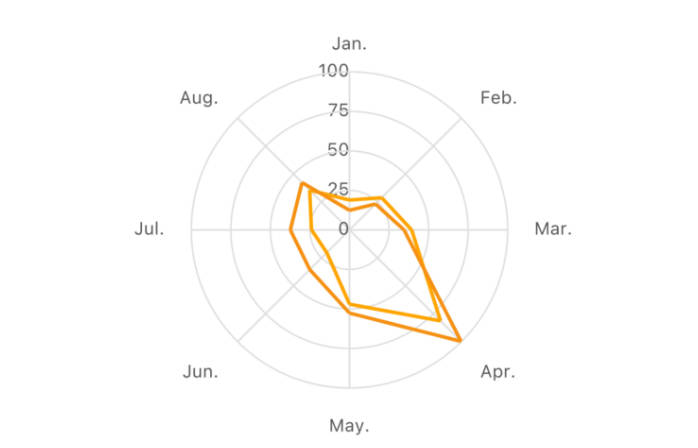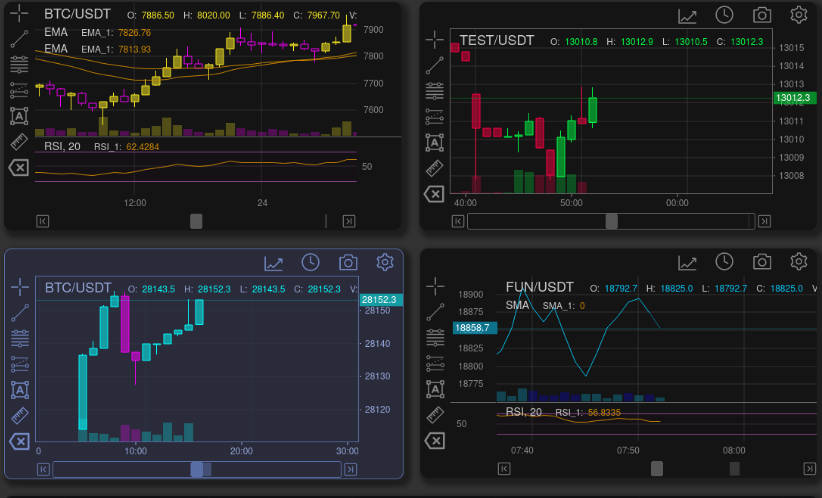React Charts
Declarative, deterministic & fluid data visualizations for React.
Features
- Line, Bar, Bubble, Area, and Pie types.
- Hyper Responsive (container-based)
- Powered by D3
- Rendered by React
- Flexible data model
- Fully controlled option
Installation
$ yarn add react-charts
# or
$ npm i react-charts --save
Quick Example
This will render a very basic line chart:
import React from "react";
import { Chart, Axis, Series, Tooltip, Cursor, Line } from "react-charts";
const lineChart = (
<Chart
data={[
{
label: "Series 1",
data: [[0, 1], [1, 2], [2, 4], [3, 2], [4, 7]]
},
{
label: "Series 2",
data: [[0, 3], [1, 1], [2, 5], [3, 6], [4, 4]]
}
]}
>
<Axis primary type="time" />
<Axis type="linear" />
<Series type={Line} />
</Chart>
);
Data Model
React-Charts uses a common and very flexible data model based on arrays of series and arrays of datums. You can either use the model defaults directly, or use data accessors to materialize this structure.
Typical visualization data can come in practically any shape and size. The following examples show data structures that are all reasonably equivalent at some level since they each contain an array of series[] and datums[]. They also show how to parse that data.
In the following example, there is no need to use any accessors. The default accessors are able to easily understand this format:
const data = [
{
label: "Series 1",
data: [{ x: 1, y: 10 }, { x: 2, y: 10 }, { x: 3, y: 10 }]
},
{
label: "Series 2",
data: [{ x: 1, y: 10 }, { x: 2, y: 10 }, { x: 3, y: 10 }]
},
{
label: "Series 3",
data: [{ x: 1, y: 10 }, { x: 2, y: 10 }, { x: 3, y: 10 }]
}
];
<Chart data={data} />;
In the following example, there is no need to use any accessors. The default accessors are able to easily understand this format, but please note that this format limits you from passing any meta data about your series and datums.
const data = [
[[1, 10], [2, 10], [3, 10]],
[[1, 10], [2, 10], [3, 10]],
[[1, 10], [2, 10], [3, 10]]
];
<Chart data={data} />;
Data Accessors
When data isn't in a convenient format for React Charts, your first instinct will be to transform your data into the above formats. Don't do that! There is an easier way ? We can use the Chart components' accessor props to point things in the right direction. Accessor props pass the original data and the series/datums you return down the line to form a new data model. See the <Chart> component for all available accessors.
In the following example, the data is in a very funky format, but at it's core is the same as the previous examples.
const data = {
axis: [1, 2, 3],
lines: [
{ data: [{ value: 10 }, { value: 10 }, { value: 10 }] },
{ data: [{ value: 10 }, { value: 10 }, { value: 10 }] },
{ data: [{ value: 10 }, { value: 10 }, { value: 10 }] }
]
};
<Chart
// Pass the original data object
data={data}
// Use data.lines to represent the different series
getSeries={data => data.lines}
// Use data.lines[n].data to represent the different datums for each series
getDatums={serie => serie.data}
// Use the original data object and the datum index to reference the datum's primary value.
getPrimary={(datum, i, series, seriesIndex, data) => data.axis[i]}
// Use data.lines[n].data[n].value as each datums secondary value
getSecondary={datum => datum.value}
/>;
Series Labels
Multiple series are often useless without labels. By default, React Charts looks for the label value on the series object you pass it. If not found, it will simply label your series as Series [n], where [n] is the zero-based index of the series, plus 1.
If the default label accessor doesn't suit your needs, then you can use the <Chart> component's getLabel accessor prop:
const data = [{
specialLabel: 'Hello World!',
data: [...]
}]
<Chart data={data} getLabel={series => series.specialLabel} />
Axes & Scales
React Charts provides you with an <Axis> component that handles both the underlying scale and visual rendering. These axes can be combined and configured to plot data in many ways. To date, we have the following scale types available:
- Cartesian
linear- A continuous axis used for plotting numerical data on an evenly distributed scale. Works well both as a primary and secondary axis.ordinal- A banded axis commonly used to plot categories or ordinal information. Works well as the primary axis for bar charts.time- A continuous axis used for plotting localized times and dates on an evenly distributed scale. Works well as a primary axis.utc- Similar to thetimescale, but supports UTC datetimes instead of localized datetimes. Works well as a primary axis.log- A continuous axis used for plotting numerical data on a logarithmically distributed scale. Works well as a secondary axis
- Radial
pie- A standalone numerical axis used for plotting arc lengths on a pie chart. Use this as the only axis when plotting a Pie chart.
Axes are a required component in a React Chart and can be imported and used like so:
import { Chart, Axis } from 'react-charts`
<Chart>
<Axis type='time' primary />
<Axis type='linear' />
</Chart>
// or
<Chart>
<Axis type='pie' primary />
</Chart>
For more information on usage and API, see the <Axis> component
Series Types
- Cartesian
- Line -
import { Line } from 'react-charts' - Area -
import { Area } from 'react-charts' - Bar -
import { Bar } from 'react-charts' - Bubble -
import { Bubble } from 'react-charts'
- Line -
- Radial
- Pie -
import { Pie } from 'react-charts'
- Pie -
Example
<Chart>
<Series type={Line} curve="cardinal" />
</Chart>
Components
<Chart>
Props
getSeries()- Responsible for returning an array of series.- Default -
() => null - Arguments:
data- The original
- Returns an
Object
- Default -
getLabel()- Default -
() => null - Arguments:
- Thing
- Returns an
Object
- Default -
getSeriesID()- Default -
() => null - Arguments:
- Thing
- Returns an
Object
- Default -
getDatums()- Default -
() => null - Arguments:
- Thing
- Returns an
Object
- Default -
getPrimary()- Default -
() => null - Arguments:
- Thing
- Returns an
Object
- Default -
getSecondary()- Default -
() => null - Arguments:
- Thing
- Returns an
Object
- Default -
<Axis>
<Series>
Curve Types
All series types that support lines or curves can be configured to use any curve function from d3-shape by passing one of the following strings as the curve prop to a series component. You may also pass your own curve function directly from d3 or if you're feeling powerful, even create your own!
Note the following string correspond to their respective d3 curve functions but with the curve prefix removed.
basisClosedbasisOpenbasisbundlecardinalClosedcardinalOpencardinalcatmullRomClosedcatmullRomOpencatmullRomlinearClosedlinearmonotoneX(default)monotoneYnaturalstepstepAfterstepBefore
Props





